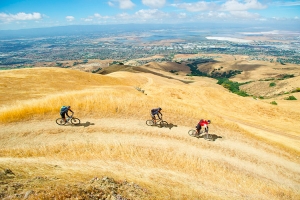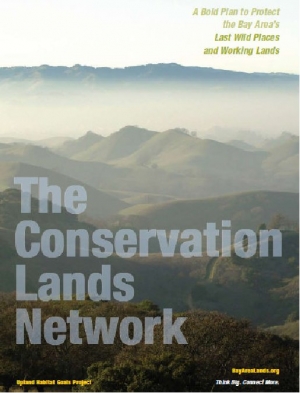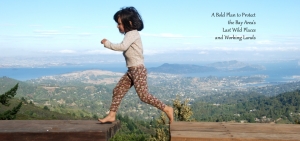Two questions from the Bay Area Open Space Council
Jenn Fox, March 12 2014
 This winter, San Francisco Bay Area is experiencing a severe drought. Here at the Bay Area Open Space Council, we’re thinking about connections between land and water. And today, for our friends in Portland, I offer this post about green grass, reasons your grass is greener, and what we all need to keep it green.
This winter, San Francisco Bay Area is experiencing a severe drought. Here at the Bay Area Open Space Council, we’re thinking about connections between land and water. And today, for our friends in Portland, I offer this post about green grass, reasons your grass is greener, and what we all need to keep it green.
Grass is green
The Portland and San Francisco Bay Areas are both really lucky. We have science-based biodiversity visions for our respective regions: your Regional Conservation Strategy and our Conservation Lands Network. Both regions have an ethic that values urban parks, trails and working ranches and farms.
 Grass is greener
Grass is greener
But keeping nature in our cities and sustaining watershed function takes commitment by elected officials and planners. And this is one area where Portland is ahead: you have a strong regional entity that also leads on transportation planning.
While we are lucky to have California's Sustainable Communities and Climate Protection Act of 2008, we have much work to do to integrate land use, housing, transportation and conservation to meet greenhouse gas targets.
Your unique directly-elected regional government, Metro, implements regional policies. We envy that Metro has a Planning and Conservation function. And I'm inspired by The Intertwine’s work to calculate the benefits derived from natural areas and to challenge civic leaders to lead this agenda.
Keeping it green
Here in the Bay Area, we’re working on two big questions aimed at making land stewardship as sexy as acquisition, and as ubiquitous as pavement.
 The first is a movement we are embarking on within our community: How do we encourage people of all kinds to engage in meaningful ways with our efforts to protect and steward land?
The first is a movement we are embarking on within our community: How do we encourage people of all kinds to engage in meaningful ways with our efforts to protect and steward land?
The Bay Area land conservation community has done great work – protecting 1.3 million acres in 10 counties. And now, that land needs to be managed and stewarded. There are streams to restore, school groups to involve, histories to understand, and relationships to build. From rare habitats to day-lit urban creeks, active and adaptive stewardship is critical and increasingly will be the focus of land conservation efforts in the Bay Area.
 The second question is about listening: How do we create a land conservation culture that is welcoming, interactive and participatory?
The second question is about listening: How do we create a land conservation culture that is welcoming, interactive and participatory?
This isn’t a one-way street where we need to convince others of the value of protected lands. It is an exchange of information and resources that flows in both ways.
On May 8th, we'll be looking at habits and transitional approaches with a close eye to what we can do differently to get results. We’ll report back here on what we are learning and we hope to keep learning from you, our neighbors.

 Jenn Fox is the Executive Director of the
Jenn Fox is the Executive Director of the
Comments
Marketing`
Add new comment